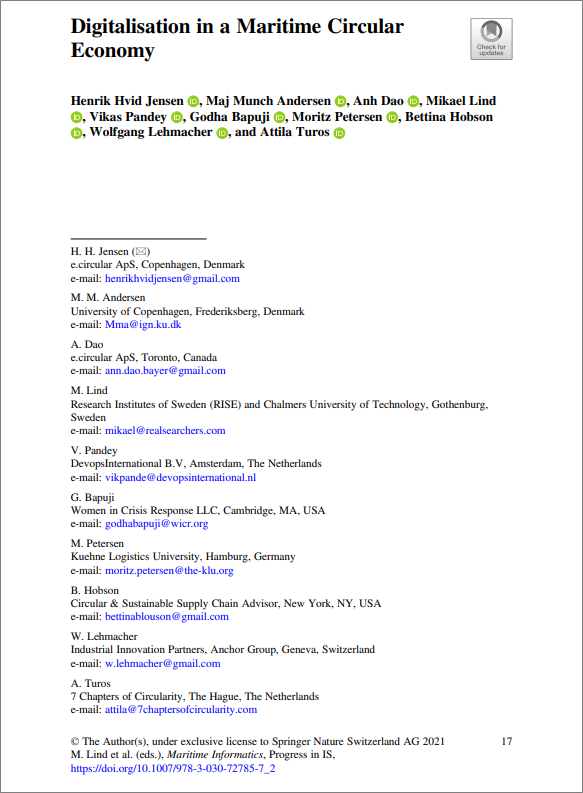Abstract
The circular economy offers new principles of doing business in a systematic resource preserving way that may turn into good business cases, while also reducing our environmental impacts substantially. The maritime sector is well prepared for adopting these principles, not least because the industry already has an ever-increasing amount of its physical infrastructures described by digital means and has several semi-circular business models implemented.
The circular economy is changing the rules and practices of business in many important ways. However, those first successfully adopting circular economy principles are likely to be more competitive, as we have often seen when companies adopt other new business models (platform business, containerised logistics, social media, etc.)
While the International Maritime Organization (IMO) emissions goals only address one-third of the potential emission from the maritime industry, the circular economy addresses the remainder (Circular Gap Report, 2019), meaning that maritime circularity will have a bigger impact on the world than the IMO’s current goals.
Focused and responsible digitalisation of the circular economy will be important to accelerate the realisation of its economic and environmental potentials. A shared interoperable digital backbone for the circular economy will add substantially to the digital benefits, accelerate the environmental impacts, and make more circular economy business models attractive.
Keywords: circular economy, digital backbone, maritime sector
Cite as: Jensen, H. H., Andersen, M. M., Dao, A., Lind, M., Pandey, V., Bapuji, G., & Turos, A. (2021). Digitalisation in a maritime circular economy. In Maritime Informatics (pp. 17–37). Springer.
